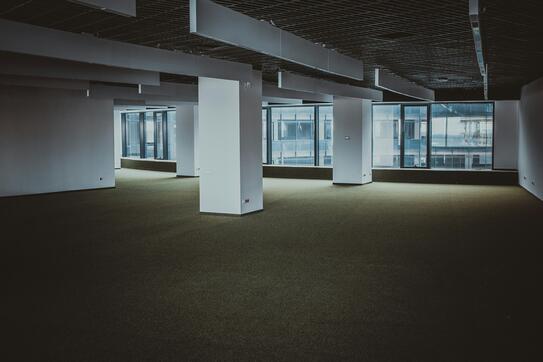New York, NY – As the American workplace evolves and businesses close their offices in city centers, the challenges of the commercial real estate sector could have a powerful impact: dragging down the small regional banks that provided loans. Research from Columbia Business School Professor Tomasz Piskorski, the Edward S. Gordon Professor of Real Estate, and his co-authors find that the combination of U.S banks dealing with heightened interest rates and ongoing disturbances in the commercial real estate (CRE) landscape poses a significant threat to the stability of the U.S. banking system.
Small and regional banks are already struggling with recent failures and hold approximately $2.7 trillion in commercial real estate debt. The decline in property values and rising interest rates further compound challenges by impacting property valuations and monthly debt service. The study “Monetary Tightening, Commercial Real Estate Distress, and U.S. Bank Fragility,” by Piskorski and co-authors USC-Marshall School of Business Professor Erica Jiang, Northwestern Kellogg School of Management Professor Gregor Matvos, and Stanford Graduate School of Business Professor Amit Seru, reveals that increased interest rates following the 2022 monetary tightening led to a significant $2 trillion drop in the value of banks' assets. To assess the additional bank losses due to the commercial real estate default risks they use loan-level data on a sample of 35,253 loans totaling $825 billion in aggregate principal balance. They find that after recent declines in property values following higher interest rates and adoption of hybrid working patterns about 14% of all loans and 44% of office loans appear to be in a “negative equity” where their current property values are less than the outstanding loan balances. Additionally, around one-third of all loans and the vast majority of office loans may encounter substantial cash flow problems and refinancing challenges.
This combination of elevated interest rates and declining property values increase the probability of commercial real estate loan defaults surpassing Great Recession levels. The study’s findings suggest regional banks could face $80 to $160 billion additional losses due to commercial real estate loan defaults putting hundreds of small and regional banks at risk of insolvency. The research team also emphasizes the significance of uninsured deposits in determining which U.S. banks could face insolvency. Their findings underscore the Federal Reserve's challenges in effective monetary policy management and stresses the need for strategic federal actions to uphold financial stability.
To learn more about the cutting-edge research being conducted, please visit Columbia Business School.
###


